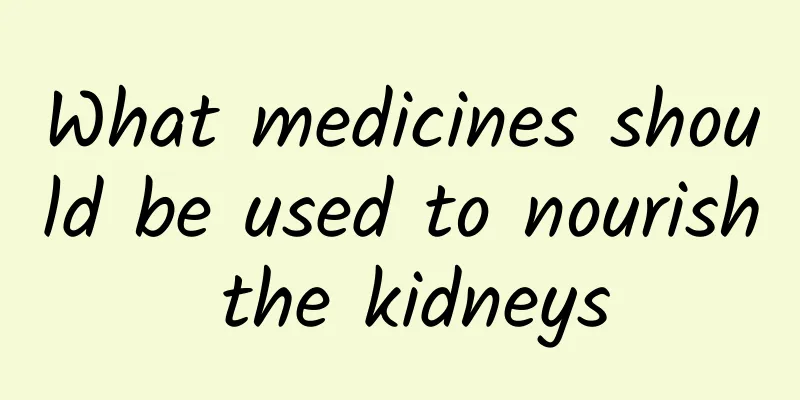How to avoid braces face?

|
People often talk about braces face. In fact, braces face means that when correcting deformities, the cheeks become thinner and the temples become sunken, resulting in a sudden change in the zygomatic region. It has a great impact on people. In recent years, the incidence of braces face has been getting higher and higher. Therefore, many people are paying more and more attention to the harm caused by orthodontics. So how can we avoid the appearance of braces face in our daily life? A crowd occurred? How likely is it to happen? "Braces face" is more common in adults and less common in teenagers and children. This may occur with or without tooth extraction. Occurrence rate in adult population: Preliminary personal clinical statistics show that it is approximately 1-2%. What are the common causes? a) Due to long-term soft diet or orthodontic needs that cause many teeth to temporarily be unable to bite (such as high bite pads), these multiple factors weaken the functional movement of facial muscles and lead to muscle atrophy. This effect can sometimes lead to a more obvious "braces face" in just 2-4 weeks. b) Malnutrition caused by dieting, strenuous exercise to lose weight, digestive system diseases, etc. can lead to a thinner face. c) Tooth extraction: Tooth extraction (such as extracting one bicuspid each on the upper, lower, left, and right sides) itself has very limited impact on the cheek. The online rumor that removing wisdom teeth can help you lose weight on your face is actually unreliable. However, it should be noted that some people do experience cheek thinning due to tooth extraction. If there is indeed an impact, it is more likely because the person has difficulty eating for a period of time after tooth extraction and can only eat soft food, or that the chewing function is weakened to a certain extent, causing muscle atrophy. In addition, tooth extraction treatment may lead to a small narrowing of the transverse width of the dental arch, but this factor has little effect on the "braces face". According to my personal clinical experience, many of the more serious "braces face" in clinical practice are caused by the simultaneous existence of factors a and b. Prevention and recovery methods? Clinical practice shows that more effective prevention and recovery training can be carried out by targeting the cause of the disease. a) Although you cannot chew hard food during orthodontic treatment, you cannot only eat soft food for a long time. Most foods can be eaten except those that require chewing or are hard. b) If you find that your face has become thinner, you can chew gum for about 15 minutes after brushing your teeth in the morning, noon and evening to fully exercise your facial muscles. I personally find that 1-2 months of such training can have a significant effect on some people with "braces faces". Patients wearing bracketless invisible braces can use chewing gum for muscle training. See [Must-read after consultation] Precautions for wearing bracketless invisible braces c) If most teeth cannot bite together due to the raised back teeth (sometimes the back teeth have to be raised to bond the lower brackets or to avoid occlusal trauma to the front teeth), or if you have toothache for a few days due to the added force of the orthodontic follow-up, you can use facial muscle exercises to train muscle function, once after each meal in the morning, noon and evening.Prevention and remedial measures for "braces face" 1. Pay attention to people who are over 25 years old, have thin faces, prominent cheekbones, and less full temples. Patients who meet these conditions should be particularly careful when undergoing correction. 2. The preventive measures for "braces face" vary for different braces. Relatively light-force correction methods make patients more comfortable, such as the popular invisible braces. Patients can take off their braces when chewing, which has less impact on the masseter muscles and makes it easier to avoid "braces face". It is important not to stop eating just because you have braces. The orthodontist will ask the patient not to bite hard objects to avoid breaking the brackets. However, normal chewing still needs to be maintained. For example, you can regularly eat tough but not hard foods such as beef and gummy candies to ensure that the chewing muscles work normally. 3. Remedial measures for "braces face" If "braces face" appears, it will slowly ease on its own after the chewing function gradually recovers, but it may not be able to completely return to the past, after all, there is the possibility of aging-related changes. Therefore, for patients who have high requirements for facial shape, some micro-plastic surgery can be performed after correction. Warm reminder: Orthodontics itself is a treatment, and the treatment goal is to align teeth, adjust the occlusion, and improve the profile. As for the accompanying "braces face" problem, I very much hope that colleagues will take it seriously and patients will understand it correctly. Don't be trapped in the vicious circle of "braces face" because of some wrong cognition. |
<<: What should I do if I have a toothache and half my face is swollen?
>>: What should I do if my face is swollen due to tooth inflamed?
Recommend
How many grams of Bupleurum chinense
Bupleurum is a very common plant in many rural ar...
Symptoms and hazards of hypothyroidism in women
Everyone is familiar with the disease of hypothyr...
What should I pay attention to when going to the hospital for a physical examination?
People nowadays are paying more and more attentio...
What to do if you have a hole in your tooth
We will find a phenomenon: there are now many pri...
Numbness in hands and feet after waking up
After waking up, you feel uncomfortable and your ...
Why is the middle of the tongue black? Three reasons are the most common
In daily life, various problems may occur in peop...
What are the types of facial dermatitis? How to make facial skin smooth and tender?
Facial dermatitis often manifests itself as sympt...
How to store human albumin?
Human albumin is actually an imported drug and ca...
What medicine should I take for a sore throat?
A cold often leads to some symptoms, sometimes ca...
Reach out and touch it and you can realize a woman's biggest dream
Can women fight against aging by simply applying ...
Chinese patent medicine for Qi and Yin deficiency
Qi and Yin deficiency is generally manifested by ...
Chronic obstructive pulmonary emphysema
Many elderly people suffer from chronic obstructi...
Symptoms of an irritable attack
Impatience mainly refers to being extremely angry...
Why does it hurt to urinate after sex?
After sexual intercourse, some couples may feel p...
What are the benefits of chrysanthemum, honeysuckle and licorice tea?
If male friends do not pay more attention to thei...









